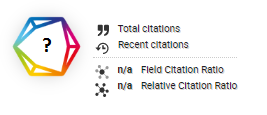THE USE OF DIALOGIC READING IN READING ACTIVITY BY IMPLEMENTING CHARACTER BUILDING USING LOCAL BASED LITERATURE
DOI:
https://doi.org/10.46984/sebatik.v25i2.1573Keywords:
Reading, Dialogic Reading, Character Building.Abstract
Reading is considered as one of the most important skill in learning foreign language since it is used in all language skills. However, teaching reading is quite challenging. In Permata group, young learners seem not motivated in reading activity. Pre observation showed that learners were bored during the shared reading activity. Moreover there were no interaction during the activity. Therefore, it takes teacher’s creativity and innovation to teach reading. This situation led the teacher to a new way of teaching reading, the teacher implemented a new approach in teaching reading by using dialogic reading. Moreover, the literature used by the teacher was a local based short story with the theme “Save Mahakam”. This study is a qualitative study in which the data was collected by observation and questionnaire. The study found that the dialogic reading and the short story did not only make the reading activity more interesting but they also helped the teachers to shape young learners’ characters. It found that there were some characters developed through the process of reading activity, such as 1) young learners have courage to speak, 2) young learners are friendly and sociable, 3) young learners are responsible with the environment, 4) young learners love reading, 5) young learners work in a team, 6) young learners think critically.
References
Creswell, J. W. (2014) Research Design Qualitative, Quantitative and Mixed Methods Approaches. 4th edn. California: Sage.
Farzaneh, N. and Nejadansari, D. (2014) ‘Students’ attitude towards using cooperative learning for teaching reading comprehension’, Theory and Practice in Language Studies, 4(2), pp. 287–292. doi: 10.4304/tpls.4.2.287-292.
Lisa A. Guion, David C. Diehl, and D. M. (2011) ‘Triangulation: Establishing the Validity of Qualitative Studies’, in University of Florida, pp. 1–3. doi: 10.32473/edis-fy394-2002.
Lonigan CJ, Purpura DJ, Wilson SB, Walker PM, C. J. (2013) ‘Evaluating the components of an emergent literacy intervention for preschool children at risk for reading difficulties’, Journal of experimental child psychology, 114(1), p. 111‐130.
Nanda, D. W. and Azmy, K. (2020) ‘poor reading comprehension issue in efl classroom among indonesian secondary school students: Scrutinizing the causes, impacts and possible solutions’, Englisia: Journal of Language, Education, and Humanities, 8(1), p. 12. doi: 10.22373/ej.v8i1.6771.
Napoli, A. R. and Johnson, V. J. (2019) ‘NebGuide’, Nebraska Extension Publication, pp. 1–5.
Nugrahanto, S. and Zuchdi, D. (2019) ‘Indonesia PISA Result and Impact on The Reading Learning Program in Indonesia’, 297(Icille 2018), pp. 373–377. doi: 10.2991/icille-18.2019.77.
Ping, M. T. (2014) ‘Group interactions in dialogic book reading activities as a language learning context in preschool’, Learning, Culture and Social Interaction, 3(2), pp. 146–158. doi: 10.1016/j.lcsi.2014.03.001.
Sim, S. and Berthelsen, D. (2014) ‘Shared book reading by parents with young children: Evidence-based practice’, Australasian Journal of Early Childhood, 39(1), pp. 50–55. doi: 10.1177/183693911403900107.
You, Y. (2011) ‘Factors in Vocabulary Acquisition through Reading’, Itj, 8(1), pp. 43–57.
Downloads
Published
How to Cite
Issue
Section
License
Authors retain all their rights to the published works, such as (but not limited to) the following rights; Copyright and other proprietary rights relating to the article, such as patent rights, The right to use the substance of the article in own future works, including lectures and books, The right to reproduce the article for own purposes, The right to self-archive the article








